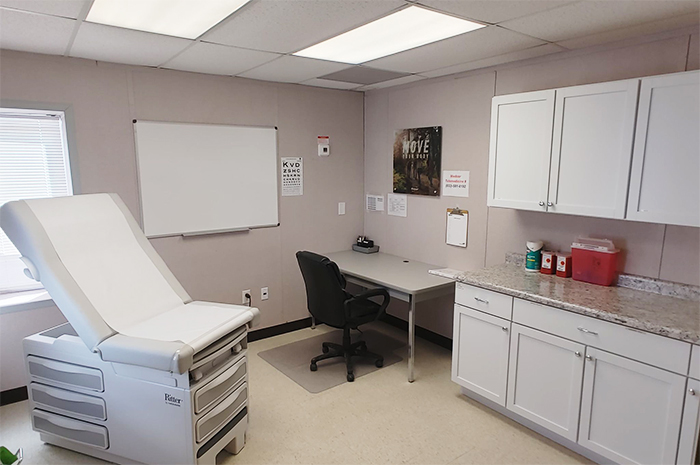Occupational Health
How Medcor’s Occupational Health Services Help Your Team Stay Healthy
Medcor delivers cost-effective, customized occupational health solutions tailored to meet the specific needs to maintain a healthy working environment for your team members. From onsite clinics offering rapid injury care and virtual injury triage to support for employers through testing, treatment and employee education, Medcor helps maintain a healthy and efficient team.

Medcor’s Occupational Health Solutions
Tailored for Industrial Workforces
High-risk environments demand proactive, efficient care. Explore how Medcor supports industrial workforces with scalable occupational health solutions designed for manufacturing, food processing, logistics and more.


The Impact of Medcor’s Occupational Health Services
Medcor’s occupational health solutions produce results for our clients, saving them in unnecessary treatments, workers’ comp claims and OSHA recordables. Workers receive faster injury response times, personalized care and a broader range of convenient occupational health services.
See the results Medcor has produced for our clients.
Occupational Health Services
-

Onsite Solutions
Onsite clinics provide medical treatment and injury care when accidents happen, while safety services reduce risk factors that cause injuries in the first place. Additional onsite occupational health services include athletic trainers, physical and occupational therapy and return-to-work programs to improve the recovery process for the employee.Learn More -

Mobile Occupational Health Services
Give your employees access to medical care on location at your worksite with Medcor’s mobile units. They allow for faster care and less downtime while providing cost-effective solutions for testing and screening employees onsite.Learn More -

Virtual Solutions
Getting the right medical advice at the right time, at the right place is critical for achieving the best employee outcomes and managing costs. Medcor’s injury triage fields over 400,000 calls annually and is available for employees 24/7. Injured or ill workers speak directly with specially trained health professionals providing immediate and consistent care.Learn More -

Employer Support
Medcor’s client support services deliver effective solutions for increasing the health and well-being of your workforce. How? By addressing education, testing and treatment across a variety of programs from Employee Screening Services to wellbeing programs.Learn More
Occupational Health Solutions from Medcor

-
Preventative and care of work-related injuries, both in clinics and via telemedicine.
-
A therapist coaches the patient through exercises designed to rehabilitate them after an injury.
-
Onsite care for your employees that’s convenient and saves them time and you money.
-
Give your employees an opportunity to speak with a healthcare professional and undergo examinations without having to leave your job site.
-
Our teams include physicians, physicians’ assistants, nurses, nurse practitioners and paramedics who deliver the best care recommendations onsite.
-
Have your employees tested onsite for drugs, alcohol and chronic illnesses to keep your workplace safe and healthy.
-
A pre-claim telehealth solution powered by proprietary technology and patented methods utilizing evidence-based medicine to assess and navigate callers to the best level of care, reducing unnecessary off site visits and costs.
-
Keep your employees up to date on immunizations and vaccinations, from flu shots to job-specific vaccines.
-
When claims become necessary, Medcor will help manage them from initial injury to your employee’s return to work.

Connect With an Occupational Health Expert
Medcor is dedicated to creating a safer and healthier workplace. Contact us to start saving money on occupational healthcare.



